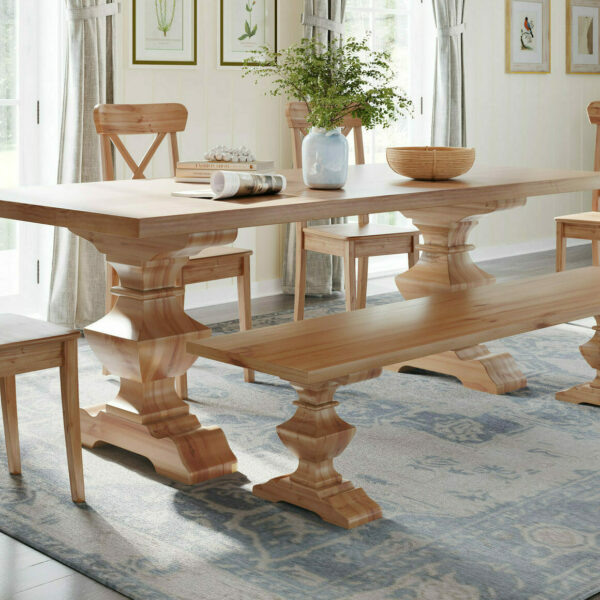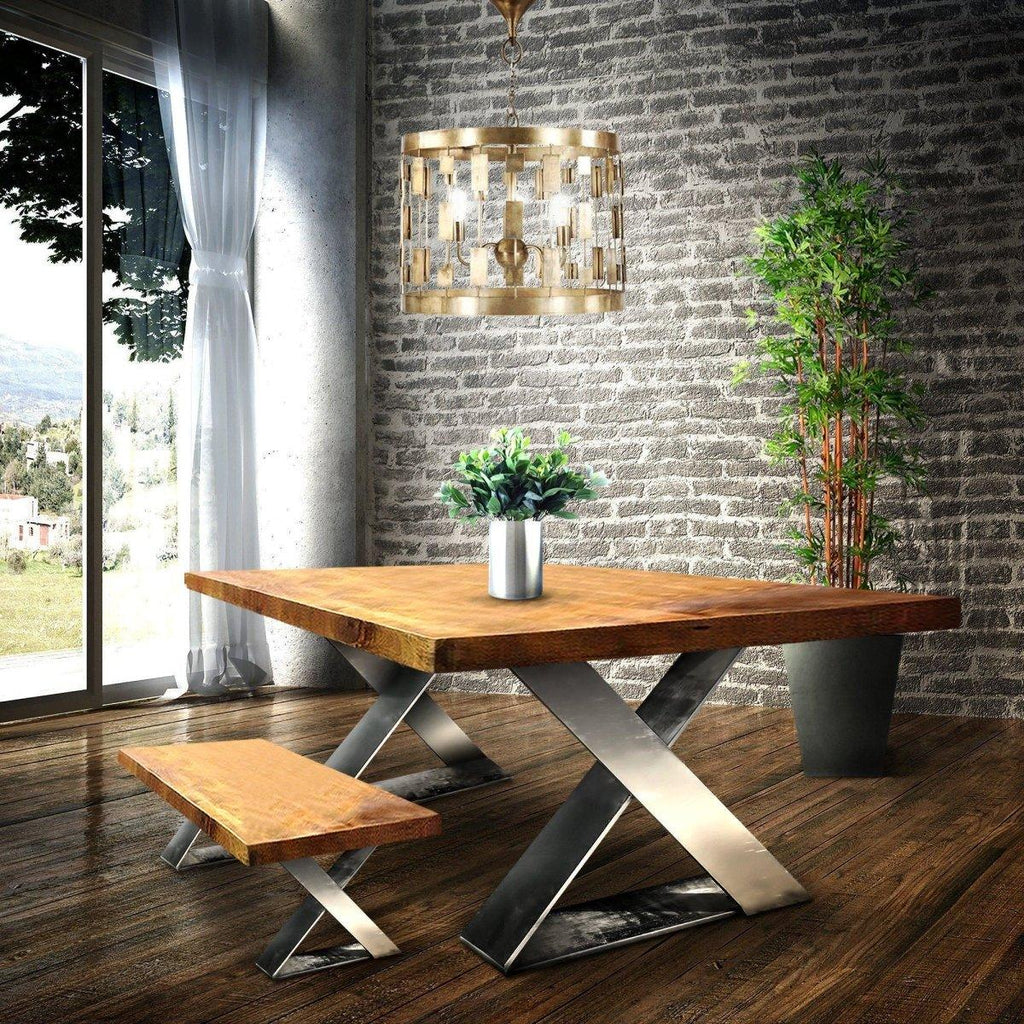Why Dining Room Table Legs Are Crucial for Your Table’s Stability
Wiki Article
From Conventional to Modern: Find the Suitable Eating Space Table Legs for Your Design
The choice of dining-room table legs plays an essential function in defining the general character of your area, bridging the gap in between typical workmanship and modern-day visual appeals. While classic designs such as cabriole and transformed legs stimulate a feeling of timeless sophistication, modern styles like hairpin and geometric alternatives provide a possibility for striking visual rate of interest. Reviewing the best balance between these designs calls for a nuanced understanding of your existing decoration and individual taste. As you think about these components, the concern stays: just how can you seamlessly incorporate these varied leg styles to create a harmonious eating experience?Comprehending Table Leg Styles
The variety of dining-room table leg styles can dramatically affect both the aesthetics and functionality of the space. Each leg style adds special visual elements and practical features, satisfying varied design choices and usage needs. Recognizing these styles is vital for choosing the ideal eating table that lines up with your overall interior decoration vision.For example, conical legs offer a clean, timeless look that can improve a space's beauty, while pedestal bases give security and make the most of legroom, making them excellent for smaller rooms. Hairpin legs, a trademark of mid-century modern-day style, present an industrial style, enabling for a ventilated, open feeling. In a similar way, trestle legs evoke rustic appeal, giving durable assistance and a sense of eternity.
Additionally, the option of materials plays a substantial role. Wooden legs can bring warmth and texture, whereas steel alternatives usually communicate a streamlined, contemporary vibe. Inevitably, comprehending table leg styles is essential for producing a cohesive dining area that reflects personal style while making certain functionality and convenience. By thoughtfully taking into consideration these aspects, you can enhance both the functional and aesthetic appeal of your eating space.
Typical Table Leg Options
When choosing eating area table legs, typical alternatives often embody ageless elegance and craftsmanship. These designs reflect an abundant heritage and a dedication to top quality, making them ideal for those who appreciate classic visual appeals.One of one of the most renowned standard leg styles is the cabriole leg, identified by its graceful rounded form. This layout often includes attractive makings and is most generally discovered in Queen Anne and Chippendale furniture. An additional popular option is the turned leg, which boasts a collection of smooth, rounded forms that give a timeless appearance while preserving stability.
Moreover, the straight leg, while basic, offers a basic and tough structure that can mix flawlessly with a selection of tabletop styles. For those drawn to ornate describing, claw-and-ball feet legs stimulate a feeling of splendour and can work as a sensational centerpiece in any type of dining area.
Last but not least, stand bases, although not purely legs, give a different typical option that enables adequate legroom and can be wonderfully carved. Each of these standard leg designs contributes to the general ambiance of an eating room, weding feature with aesthetic allure.

Modern Table Leg Styles
Modern table leg styles offer a varied variety of styles that emphasize clean lines and ingenious materials. These styles typically focus on capability while offering as striking focal factors within an eating area. Minimalist appearances are widespread, with legs crafted from materials such as metal, glass, and engineered timber, which add to a modern and airy feel.One popular layout is get more the hairpin leg, characterized by its slim, conical structure that provides security without frustrating the table top (dining room table legs). This design is usually found in mid-century modern furniture and can effortlessly complement numerous table shapes. One more pattern is the use of geometric shapes, where legs might handle angular or asymmetrical forms, including visual rate of internet interest and a touch of artistry

Blending Styles for Distinct Spaces
Usually, property owners seek to produce one-of-a-kind eating areas that reflect their personal design by mixing various design aspects. This technique enables the consolidation of varied appearances, leading to a harmonious yet distinct environment. For example, coupling a rustic wooden table with streamlined, modern-day steel legs can develop an attractive contrast that raises the room's general appeal.Additionally, integrating vintage table legs with contemporary table tops can evoke a feeling of history while maintaining a modern-day sensibility. Such mixes not just showcase individual taste however likewise encourage imagination, enabling homeowners to curate a space that feels both individual and inviting.
Color plays a crucial duty go to this site in this blending process; picking table legs that match or comparison with the existing color pattern can boost visual passion. Whitewashed legs can soften the boldness of a dark table surface area, producing a well balanced visual.
Tips for Selecting the Right Legs
Choosing the right table legs is crucial for achieving both capability and aesthetic charm in your dining area. Begin by taking into consideration the general style of your space. Standard settings gain from legs that include complex makings or turned styles, while contemporary spaces may require streamlined, minimalist designs.Next, examine the height and stability of the legs. dining room table legs. Typical table range between 28 to 30 inches in height, so guarantee the legs match this measurement for comfort. Furthermore, robust materials, such as hardwood or metal, can enhance security and long life
Examine the leg form as well-- alternatives consist of directly, tapered, or pedestal layouts. Straight legs use a traditional appearance, while conical legs can add a touch of beauty. Pedestal bases supply adequate legroom and are perfect for smaller sized spaces.
Final Thought
In summary, selecting the perfect dining space table legs requires mindful consideration of both modern and traditional designs. Typical alternatives such as cabriole and turned legs offer timeless beauty, while modern-day designs like barrette and geometric forms give a contemporary touch. By harmonizing leg style, elevation, and product with the total decoration, a natural and welcoming atmosphere can be achieved. Eventually, the chosen table legs should show the preferred aesthetic, boosting the eating experience within the space.The range of dining room table leg styles can substantially influence both the aesthetic appeals and capability of the room. Inevitably, comprehending table leg designs is necessary for producing a cohesive eating location that mirrors individual design while guaranteeing practicality and comfort.One of the most renowned typical leg designs is the cabriole leg, defined by its graceful rounded shape. Straight legs offer a classic appearance, while tapered legs can add a touch of style.In summary, choosing the ideal dining area table legs needs cautious consideration of both modern and typical designs.
Report this wiki page